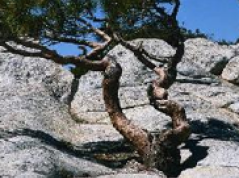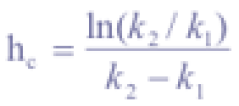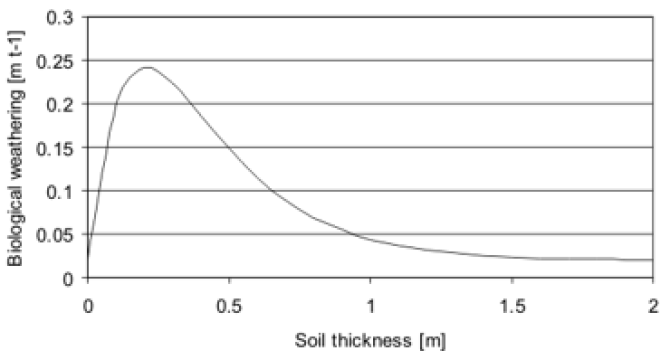
Biological Weathering
Biological weathering occurs when plants break up rocks with roots or root exudates. The process is slow, but may strongly influence landscape formation. Biological weathering increases with soil thickness until optima for biotic activity are reached, but decreases when soils get thicker and biotic activity has less influence on weathering.

The first application that included biological weathering in LAPSUS, was Temme and Veldkamp’s study in South Africa.
Case Studies: » South Africa
Technical Information
The original implementation of biological weathering was developed by Minasny and McBratney, 2006.
Where ep (m) is the volume of biological weathering, P0 (m t-1) is the maximum weathering rate of bedrock, k1 (t-1) is the weathering rate constant when soil thickness > hc, and k2 (t-1) is the rate when soil thickness ≤ hc. Pa (m t-1) is the biological weathering rate at steady state. Soil thickness hc (m) where maximum biological weathering occurs is given by:

The main criticism of this implementation is that it is not a function of topographic position, and hence that water is always assumed present in optimal amounts given current soil thickness (Minasny and McBratney, 2006). In reality, equally thick soils on crests, slopes, and in valleys would hold different amounts of water as a result of their position, and weathering rates would be influenced. For our case study area, where an excess of water was deemed improbable, a simple approach was chosen that assumes that rainfall has a positive linear effect on biological weathering.
Another disadvantage of the implementation of (Minasny and McBratney, 2006) is the fact that the influence of vegetation on weathering is implicitly dependent on soil thickness only. In reality, under constant soil thickness, changing vegetation would change the values of the four constants mentioned above. Because it is not known how that would occur, a simple approach was chosen that assumes that vegetation cover V (-) has a positive linear effect on weathering, through increased root burrowing.
In the resulting implementation, the four constants of (Minasny and McBratney, 2006) have been redefined as those occurring under conditions of maximum vegetation cover and rainfall:
With raint and rainmax in (m).
In this implementation, weathering is assumed independent of lithology, but changes can be readily made. Fig. 1 shows the resulting rate of weathering under changing soil thickness, when rain is rainmax , V = 1, and the other parameters have the values.

References
- Temme, A.J.A.M., Veldkamp, A, 2009: Multi-process Late Quaternary landscape evolution modelling reveals lags in climate response over small spatial scales. Earth Surface Processes and Landforms 34 (4): 573-589
- Minasny, B. and McBratney, A.B., 2006. Mechanistic soil-landscape modelling as an approach to developing pedogenetic classifications. Geoderma, 133(1-2): 138-149.